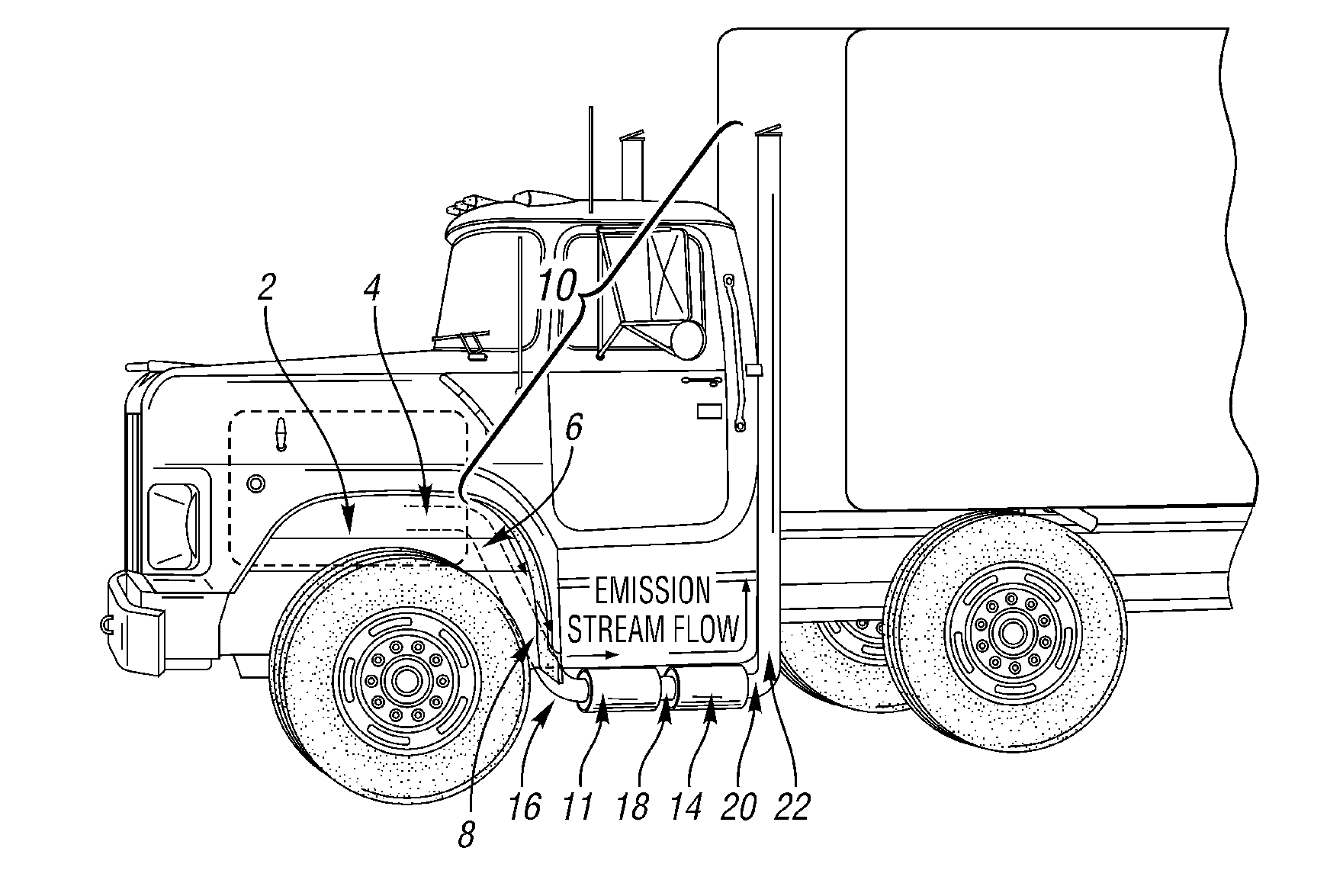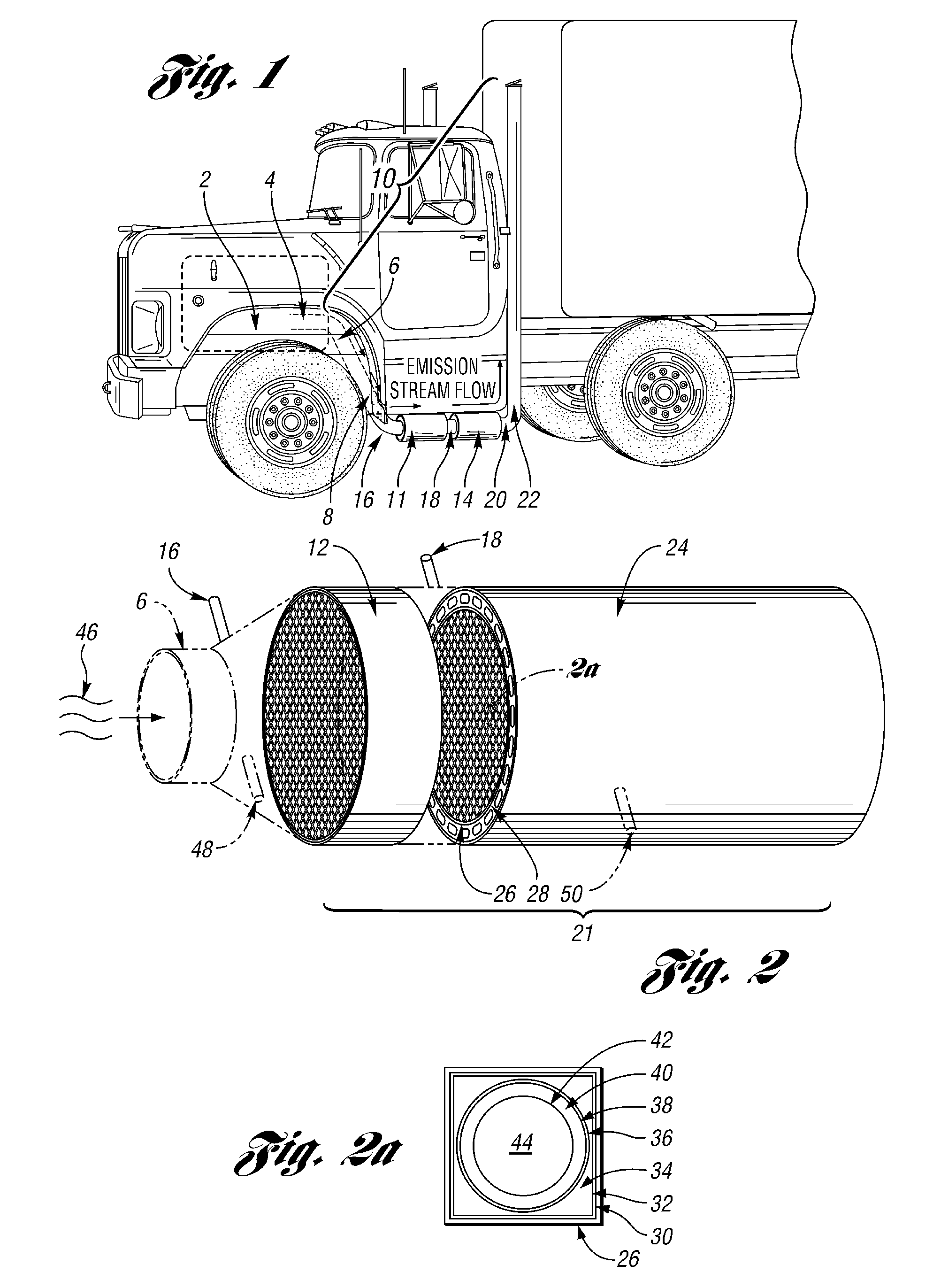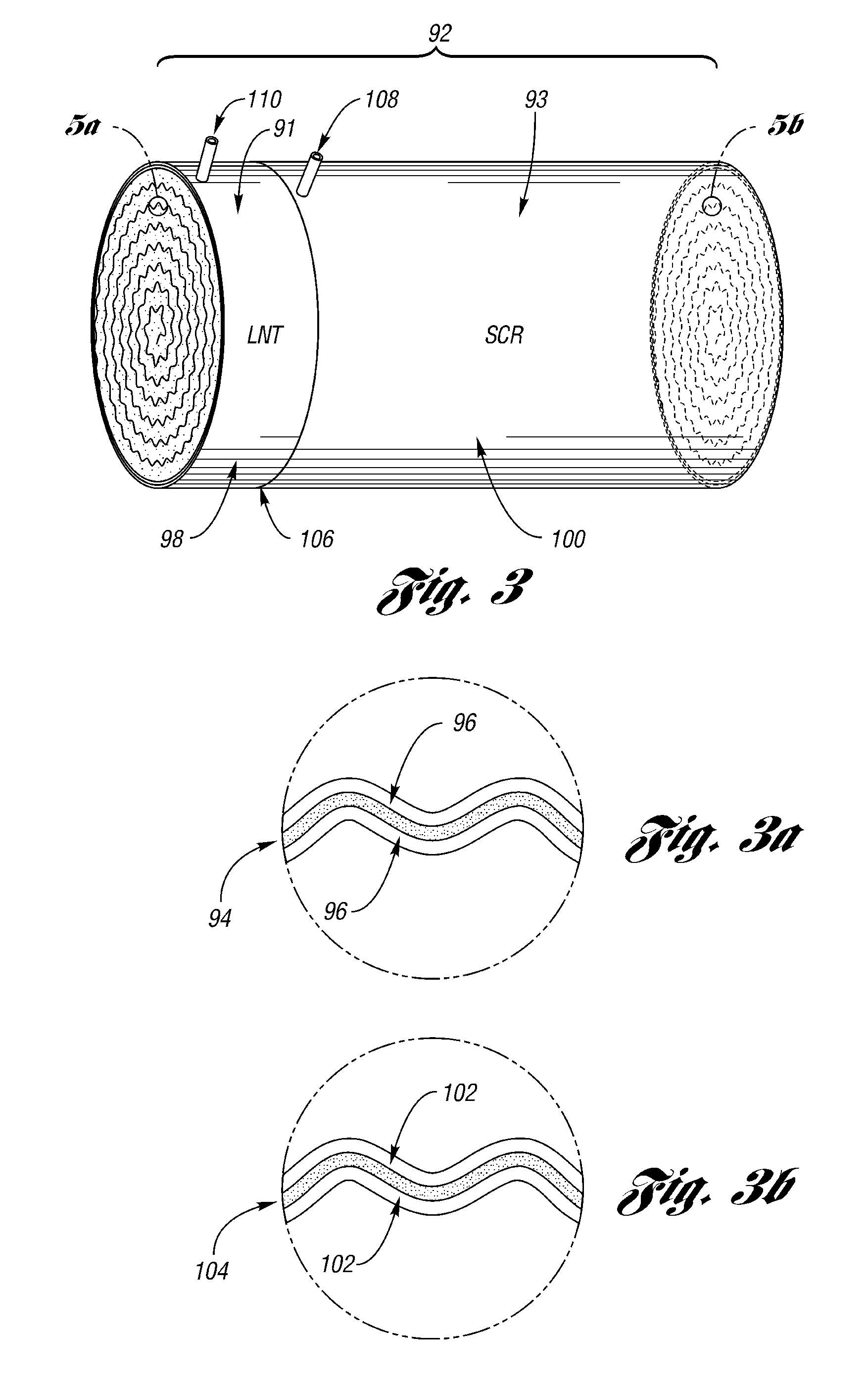Method for remediating emissions
a technology of nox traps and emissions, applied in the direction of machines/engines, engine components, mechanical apparatus, etc., can solve the problems of system disadvantage, system failure, and difficulty in providing relatively good nox storage capacity of lean nox traps
- Summary
- Abstract
- Description
- Claims
- Application Information
AI Technical Summary
Benefits of technology
Problems solved by technology
Method used
Image
Examples
example 1
[0053] This example of the SCR / LNT shows the mitigation of the emissions control problem for mobile sources such as the diesel-powered truck using the method and remediation system of certain embodiments of the present invention.
[0054] A relatively difficult control scenario arises when controls try to meter ammonia or urea to match the concentration of NOx during transient engine operations. Transient engine operations may cause the exhaust flow rate, the temperature of the emissions and the NOx concentration to change rapidly. In certain embodiments, to provide relatively high NOx conversion regardless of the concentration of NOx emissions contained in the emissions, the SCR / LNT will make use of its SCR capability, its LNT capability, or both.
[0055] Some aspects of this example depend on the exhaust temperature. At the relatively low inlet temperature of emissions, such as in the range of 150 to 400° C., the SCR properties of the SCR / LNT are predominantly being used for remediat...
example 2
[0059] In this example, the LNT portion of the SCR / LNT, either the first LNT 12 (FIG. 2), the LNT layer 34 portion of the layered SCR / LNT 24, and / or the zoned LNT 91 (FIG. 3), may approach its capacity to store NOx. In some cases, the LNT may need to be purged in order to restore the NOx storage capacity. In certain embodiments of the present invention, the LNT may be purged when the exotherm generating agent, such as diesel fuel, is introduced into the emissions 46 (FIG. 2) upstream of the noble metal containing member such as the lightoff catalyst, the first LNT 12 (FIG. 2), the LNT layer 34 (FIG. 2) portion of the layered SCR / LNT 24, and / or the zoned LNT 91 (FIG. 3), while maintaining the overall lean A / F ratio in the emissions stream 46 (FIG. 2). While not wishing to be bound by any particular theory, the fuel may combust to increase the temperature of the emissions 46 which may purge the LNT of stored NOx. The oxidation of the hydrocarbons by the noble metal component may produ...
example 3
[0064] In this example, the layered SCR / LNT is made. The LNT layer washcoat can be applied on the honeycombed substrate of mullite with channels open at both ends. The wash coat is dried in place. The LNT is then completed by impregnation of the washcoat with noble metal solutions to yield a product having 150 grams of noble metal, expressed as metal, per cubic foot of dried, washcoated LNT. The SCR washcoat layer is applied over at least portions of the LNT layer washcoat. As part of the washcoating process, the SCR washcoat layer is dried.
PUM
 Login to View More
Login to View More Abstract
Description
Claims
Application Information
 Login to View More
Login to View More - Generate Ideas
- Intellectual Property
- Life Sciences
- Materials
- Tech Scout
- Unparalleled Data Quality
- Higher Quality Content
- 60% Fewer Hallucinations
Browse by: Latest US Patents, China's latest patents, Technical Efficacy Thesaurus, Application Domain, Technology Topic, Popular Technical Reports.
© 2025 PatSnap. All rights reserved.Legal|Privacy policy|Modern Slavery Act Transparency Statement|Sitemap|About US| Contact US: help@patsnap.com



